This is a unique and somewhat impossible time in the sports world and in the world as a whole. Due to the spread of the coronavirus, we have no idea whether or when soccer and other sports will resume their seasons, we don't know whether there will be fans in the stands when they do, we don't know whether or when transfer windows will open and, most importantly from a sports perspective, we don't know just how painful the financial hit from this stoppage will be. It could be awfully bad, and it could drastically change the way personnel decisions are made.
- Coronavirus cancellations and reactions across sport
- Hunter: Coronavirus might change football forever
- Karlsen: How clubs are staying sharp during shutdown
We do, however, know how teams looked before the stoppages took place. So as we continue to search for diversions during this extended period of social distancing, let's look at England's six richest clubs -- Liverpool, Manchester City, Manchester United, Arsenal, Chelsea, and Tottenham Hotspur -- and assess their strengths and weaknesses moving into the future. You know, for whenever there's a future to actually move into.
Editor's Note: There will be a second edition of this, looking at the biggest clubs across Europe (Barcelona, Real Madrid, Bayern Munich & Co.), next week.
Jump to: Tottenham | Arsenal | Man United | Chelsea | Man City | Liverpool

TOTTENHAM
2019-20: eighth in the Premier League (1.41 points per match)
This season has been fascinating to watch and has unfolded in several distinct stages. First, a talented but stale roster underachieved for Mauricio Pochettino. Then, injuries waylaid any attempted recovery for new manager Jose Mourinho. Forward Harry Kane and midfielder Moussa Sissoko haven't played since early January, with forward Son Heung-Min joining the duo on the injured list a few weeks later. The offense has had to come from the midfield, which is another way of saying it hasn't come.
Spurs were blown out by Red Bull Leipzig in the Champions League round of 16, and although they trailed fifth-place Manchester United by only four points at the time of play stopping, it was beginning to feel like 40.
Biggest strength: The core roster is somehow still pretty young
Kane is 26, and Son, right back Serge Aurier and forward Lucas Moura are 27. (Dele Alli, Spurs' most productive player since the injury run began, is somehow still 23.) If we assume a player's peak (on average) comes in the 25-29 age range, there could still be another year or two of high-level productivity in store for this group even if some have more mileage on their respective odometers than typical players their age.
Spurs also have an interesting base of talented youngsters: midfielders Giovani Lo Celso, Harry Winks, Steven Bergwijn and Tanguy Ndombele and defenders Davinson Sanchez and Japhet Tanganga are all 24 and under, along with Alli. Really, only defender Toby Alderweireld and Sissoko are in danger of aging out of the rotation in the coming years. Safe to say, defender Jan Vertonghen already has.
The team's hustle levels in the midfield were still strong even without Sissoko, probably Spurs' best player in ball pursuit. Since Jan. 1, they ranked third in the Premier League in total ball recoveries, and while they were increasingly incapable of pressing high up the field, they were fourth in possessions won in the middle third of the pitch. They were still putting in effort, and theoretically if/when you add Sissoko and actual offensive options in Son and Kane, you might have a team again.
Biggest concern: Mourinho and mileage
Theoretically, this team still looks good when its stars are healthy. Even after absorbing the Kane-Sissoko blow, he had figured out a solid counterattacking plan -- albeit one far too reliant on one player (Son) -- to keep Spurs playing reasonably well. (They were also, admittedly, a bit fortunate from an expected goals perspective in this span.)
Without Son, however, Spurs were neither a defend-and-counter squad nor a pressing-and-possession one. Obviously any team is going to be worse without its best players, but age curves or no, it's hard to rely on players like Kane, Son and Sissoko to remain consistently healthy moving forward, and the lack of identity was still alarming. Mourinho was also potentially showing some of his old habits in trying to get players to play through injury and making temperamental lineup changes.
Moreover, Mourinho tends to prefer working with veterans, and while this roster perhaps isn't as old as it seems, bringing in another couple of 30-and-over types would likely make it an even more injury-prone, squeeze-juice-from-a-rock lineup.
- Stream ESPN FC, 30 for 30 Soccer Stories and much more on ESPN+
- A letter from the great quarantine: Missing football, pasta and friendship
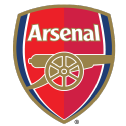
ARSENAL
2019-20: ninth in the Premier League (1.43 points per match)
As with its North London rivals, 2019-20 was a bit of a lost season for Arsenal. With the Gunners a listless eighth in the Premier League and winless for over a month in all competitions, Unai Emery was fired on Nov. 29. Club great Freddie Ljungberg served as interim manager for a few weeks; then on Dec. 20, former Arsenal midfielder and Pep Guardiola assistant Mikel Arteta took over full time.
The team's form improved. In 13 matches in all competitions this calendar year, Arsenal lost just once. Granted, the loss was costly -- an upset defeat to Olympiakos in the Europa League round of 32 -- but in league play, only Liverpool and Manchester City generated more points in this span. And Arsenal was playing at this level with a young core.
Biggest strength: Roster balance
Only 34% of Arsenal's minutes in league play went to players in that prime 25-29 age range. Within the Premier League, only Leicester had a lower percentage. But while there are certainly some key players on the wrong side of 29 -- forward Pierre-Emerick Aubameyang (30), midfielder Mesut Ozil (31), and defenders Sokratis Papastathopoulos (31) and David Luiz (32) -- there is also quite a bit of exciting youth.
The team's attack was still led primarily by Aubameyang and 28-year-old Alexandre Lacazette, but four players age 20 or younger had produced at least 2.0 combined expected goals and assists since Jan. 1: forwards Gabriel Martinelli (3.1) and Eddie Nketiah (3.1), left back Bukayo Saka (2.2) and midfielder Reiss Nelson (2.0). Ball-dominant forward Nicolas Pepe (3.7) is only 24, too, and five other midfielders 24 and younger logged 270-plus minutes under Arteta. Player development is unpredictable, of course, but you can see an incredibly exciting core here, one that won't reach its prime for a few more years.
Biggest concern: Do these attacking pieces actually mix?
After averaging at least 0.9 xG per 90 minutes every year from 2015-16 to 2017-18, Aubameyang's average fell to 0.79 last season and 0.46 this year. Lacazette has been at 0.44 each of the past two years after four years over 0.5. They could be on the downward portion of their respective careers.
Meanwhile, Pepe is basically Trae Young in soccer form: he's over the ball a lot and constantly aims for the one big pass or glorious long strike. Since Jan. 1, his average xG per shot is a ghastly 0.09, compared with 0.28 for Nketiah, 0.26 for Lacazette or 0.19 for Martinelli. He's also taken more shots than anyone but Lacazette.
Arsenal has the fifth-highest possession rate in the league since Jan. 1 and has allowed the fewest league goals in that span (six), but it also has taken the fewest shots and is 15th in expected assists. The Gunners have a bit of a stagnation problem on offense, and for all the upside here, there's still reason to wonder whether Arteta can build the attack he needs without a few personnel moves.
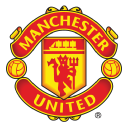
MANCHESTER UNITED
2019-20: fifth in the Premier League (1.55 points per match)
Manchester United's 137th season can be divided into two sections: Before Bruno and After Bruno. The former was decent, if confusing; the latter was potentially great.
Before midfielder Bruno Fernandes arrived from Sporting CP in late January, Ole Gunnar Solskjaer's squad was showing both upside and inconsistency. It beat Chelsea, Leicester and Manchester City and earned a solid draw against Liverpool; it also lost at Crystal Palace, West Ham United, Newcastle, AFC Bournemouth and Watford. The lineup was unstable due to injuries (namely, Paul Pogba's) and inconsistency. The team had lost three of four matches in league play before Fernandes came to town.
After Bruno: six wins, three draws and zero losses in all competitions, with a goal differential of plus-20. United beat Chelsea at Stamford Bridge and Manchester City at home by 2-0 margins. It won its Europa League return leg against Club Brugge 5-0, then crushed LASK 5-0 in the first leg of the round of 16. It was playing the best soccer in the Premier League at the time of the stoppage. Fernandes was named the Premier League's player of the month for February, dominating statistically -- in nine matches: 24 chances, 20 key passes, 4 assists, 3 goals and 8 possessions won in the attacking third, not to mention the praise from coaches and teammates.
Biggest strength: They've seen into the future
This recent run of brilliant form took place without Pogba or forward Marcus Rashford and with keeper David de Gea splitting time with backup Sergio Romero, who gets the minutes between the posts in the Europa League.
Instead, this new lineup, built around 25-year old Fernandes, has included contributions from forwards Anthony Martial (24 years old) and Mason Greenwood (18), midfielders Scott McTominay (23) and Brandon Williams (19), winger Daniel James (22), fullbacks Luke Shaw (24) and Aaron Wan-Bissaka (22), defensive midfielder Fred (27) and center backs Harry Maguire (27) and Victor Lindelof (25). Only winger Juan Mata (31) and Nemanja Matic (31) have aged out of their primes. Plus, Rashford is just 22, and keeper Dean Henderson (23) has been brilliant in a loan spell at Sheffield United.
This is a deep, young squad brought to a new level by Fernandes' talismanic qualities. United could choose to keep Pogba or attempt to ship him out. Either way, it doesn't have to fear the wrong decision here: it should be in great shape regardless.
Biggest concern: Coping with the pressure
Like Texas in (American) college football, United are a money cannon and brand behemoth; as such, we always race to declare them "Back!!" at the first given opportunity. That alone should make us pause here. We're reacting to a pretty small sample size with Fernandes, and this team's youth made it a pretty shoddy road team for much of the season. The pressure has been off since Fernandes' arrival -- United weren't in the Champions League, and it seemed the best they could hope for was fifth in the Premier League (now it might be fourth).
The hype will come pretty quickly, though; will this team respond well to it, or will it eat this young lineup alive?
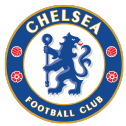
CHELSEA
2019-20: fourth in the Premier League (1.66 points per match)
Building a true youth movement at a huge club is really difficult. You have to keep up with the Joneses, which means you have to toss a certain amount of money around, and you can't fall too far down the table without a really good reason. Yet Chelsea got a chance to truly find out what it has in the youth department this year because there wasn't much choice: The club was banned from the summer transfer window. It still acquired Christian Pulisic from Dortmund before the ban took effect, and it still solidified a loan-to-buy deal with Real Madrid for midfielder Mateo Kovacic, but compared with other clubs, that's not much wheeling and dealing.
Instead, midfielder Mason Mount (previous loan spells at Vitesse and Derby County), forward Tammy Abraham (Bristol City, Swansea, Aston Villa), defenders Fikayo Tomori (Brighton, Hull City, Derby) and Andreas Christensen (Borussia Mönchengladbach twice) and fullback Reece James (Wigan) all got a run this season. To add to the youth movement vibe, the team also hired former Chelsea star Frank Lampard as manager despite his having just one year of coaching experience.
Biggest strength: The youth thing worked out pretty well!
With 19% of minutes going to players 21 and under (compared with only 12% for players over 30), the Blues have had a predictably up-and-down campaign. They dropped 10 points in their first six league matches, then won six in a row and then lost five of seven. But the net result has been solid. They tied for first in their Champions League group and advanced to the FA Cup quarterfinals by walloping Liverpool in early March. Despite a mad charge from Manchester United, Chelsea remained in fourth place in the league, three points above United and five behind Leicester.
Better yet, Abraham and Mount led the way with a combined 25.1 expected goals and assists. Pulisic should be healthy next season to replace the (potentially surplus) Willian in attacking midfield, and if Chelsea wants to spend some money in the next window, it could aim for a big fish instead of addressing a few different needs.
Biggest concern: Defense
Although Chelsea has scored the fourth-most goals in the league (51), it also has allowed 39, second most among the Big Six. (The carcass that used to be Spurs has allowed 40.)
Heavy-possession teams like the ones Lampard tries to field are going to leave themselves vulnerable to counterattacks in general -- just ask Pep Guardiola -- plus keeper Kepa Arrizabalaga has had an up-and-down season. Perhaps most importantly, Lampard never established a solid rotation in the back. While veteran fullback Cesar Azpilicueta has played the most minutes in league play, the center back and defensive midfield positions have been a revolving door: N'Golo Kante has been available only about half the season, center back Antonio Rudiger less than that. That has meant opportunity for players such as Tomori, Christensen and Kurt Zouma, but the defensive lineup hasn't settled all year.
Maybe that will change with an offseason of recovery and analysis.
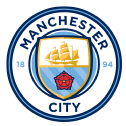
MANCHESTER CITY
2019-20: second in the Premier League (2.04 points per match)
Whether you prefer goal differential, expected goals, or good, old-fashioned points, Manchester City fielded the two most dominant teams in the history of the Premier League in 2017-18 and 2018-19. Last year's Liverpool team was the third most dominant in two of those three categories but couldn't even claim a title because of City.
Biggest strength: They're still Man City
In terms of xG, City's 2019-20 team was worse than its predecessors, but only slightly. After enjoying a plus-1.76 xG differential in 2018-19 and plus-1.65 in 2019-20, it fell all the way to ... plus-1.63 this year. Only the league's third-best of the decade. The shame. Still, after hitting 100 and 98 points the past two years, City was on pace for only about 77. It went from averaging more than two points in matches decided by 0-1 goals to averaging just 1.6. The defense was definitively worse, but the team also was definitively unfortunate.
It's worth pointing this out if only to say there's nothing structurally wrong with the ship Pep Guardiola is sailing. The attack next year will still be guided by Guardiola on the sideline and Kevin De Bruyne (28) and Raheem Sterling (25) on the pitch. And while legends Sergio Aguero and David Silva are on the wrong side of the aging curve, 22-year old Gabriel Jesus and 19-year old Phil Foden are not.
Biggest concern: Uncertainty
City created more chances on average than it did in its title-winning years and allowed fewer chances. But it went from allowing 2.2 shots on goal to 3.2 and from 0.7 xG allowed to 1.1. The chances opponents got were cleaner and better than ever, particularly on counterattacks, and there's no single clear explanation as to why. Center back Aymeric Laporte is City's best defender when healthy and was barely healthy this year, and holding midfielder Fernandinho is getting up there in years (34). But he was old last year, too; do one or two players alone make a half-goal difference per match? Probably not.
Of course, there is obviously a larger degree of uncertainty on the table for City than explaining why the defense grew leaky. If City's UEFA ban is upheld, or even if it is downgraded to just a one-year Champions League absence instead of two, that brings with it a number of questions: How much money does it stand to lose? Will it look to cut costs? Will a star player (or players) look to leave because he doesn't want to miss the UCL? Will Pep? (OK, Pep probably won't look to leave.) Moreover, City is approaching an age problem: Fernandinho and Silva will be 35, Nicolas Otamendi 33, Aguero 32, Kyle Walker, Ilkay Gundogan and Riyad Mahrez 30. That chunk of the squad is hard to address and refresh if you've suddenly got a much tighter budget.
Until we get the answers to these questions, it's impossible to know what to make of next year's Premier League race. If City's budget remains high and its roster remains semi-healthy, then the absence of Europe could mean that it focuses solely on league success and romps to another title. But if an exodus occurs, the 2020-21 race could be the most wide-open in years. Especially if you think Liverpool is due some serious regression to the mean.
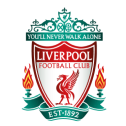
LIVERPOOL
2019-20: first in the Premier League (2.83 points per match)
Despite the disappointment emanating from the last couple of weeks before the stoppage -- Liverpool lost its unbeaten league record, its FA Cup bid and its Champions League bid in short succession -- most of this season has played out like a dream. If the campaign reaches completion at some point, the Reds will win their first league title in 30 years, almost certainly setting a Premier League points record in the meantime. And social distancing or no, LFC fans will celebrate the hell out of that.
Biggest strength: Management
Manager Jurgen Klopp has been one of the sport's best coaches for most of this century; few can combine his tactical excellence with his man management abilities. But when I say "management" here, I mean something else, too.
I've talked a lot in this piece about players aging into (or out of) their prime, and Liverpool is the ultimate example of the effect this can have on a team. The roster was slowly designed so that a number of players would peak at once and sure enough, 75% of this year's league minutes went to players 25-29. Not only was that tops in the Premier League but it was second among the 98 teams in Europe's big five leagues. (Only Wolfsburg was higher, though it didn't help as much: it was seventh in the Bundesliga before play stopped, a full 13 points adrift from the top four.)
To not only have an incredible collection of talent -- Mohamed Salah, Roberto Firmino and Sadio Mane up front, Jordan Henderson, Georginio Wijnaldum, Fabinho and Alex Oxlade-Chamberlain in midfield, Virgil van Dijk, Andrew Robertson, Trent Alexander-Arnold and Joe Gomez in defense, Alisson in goal -- but to get just about the best possible versions of all of those players at once (all of them are 26-29 except TAA and Gomez)? Married to a playing style that maximizes most of their capabilities? That's a miracle of roster management.
Biggest concern: Time and fortune
It's also a miracle that Liverpool made it through most of this season with this lineup intact. The injury bug was kinder to Liverpool than most -- that remains true even if you acknowledge the role Alisson's injury played in the Champions League defeat -- but it probably won't be a second time around. Nor will the god of close games: Liverpool went from averaging 2.06 points in matches decided by 0-1 goals last year to an unsustainable 2.87. Plus, its expected goal differential (+1.12) wasn't nearly as high as its actual GD (+1.55) -- that 0.43-goal difference was the second most fortunate in the league behind Leicester City. That tends to regress, too.
Liverpool's stat profile is that of a contender and potential champion, not an all-time record holder. That shouldn't dampen the title party, if or when it takes place, but it will dampen the odds of a second party next year.
Meanwhile, part of mastering the age curve is continuing to master it. If Liverpool enjoys the exact same distribution of minutes moving forward, its percentage of minutes going to players 25-29 would drop from 75% to 60% next year, then 42% the year after. Wijnaldum and Henderson will turn 30 next season, Van Dijk and Firmino the season after that, etc. As players age out, new players will have to age in to keep this thing rolling, and Liverpool will have to make tough choices about players who have moved mountains for the team in recent years. That's easier said than done.
